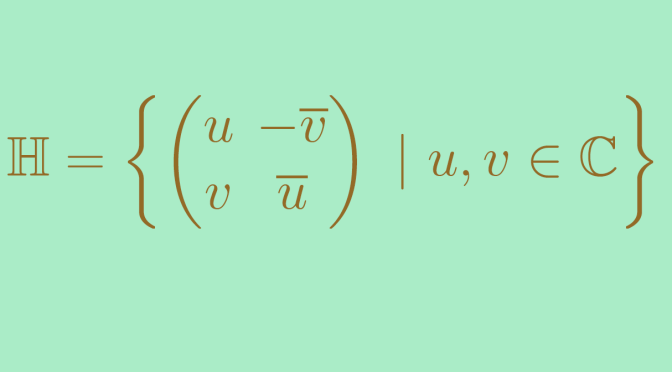We give here an example of a division ring which is not commutative. According to Wedderburn theorem every finite division ring is commutative. So we must turn to infinite division rings to find a non-commutative one, i.e. a skew field.
Let’s introduce the skew field of the Hamilton’s quaternions H={(u−¯vv¯u) | u,v∈C}
H is a subring of M2(C) (the set of matrices of dimension 2 over C)
One can easily verify that the identity matrix is an element of H taking (u,v)=(1,0). Also the sum and the product of two elements of H belong to H.
The non-zero elements of H are invertible
Take (0,0)≠(u,v)∈C2. The determinant of A=(u−¯vv¯u) is δ=detA=|u|2+|v|2>0. Hence A is invertible and A−1=1δ(¯u¯v−vu)
Hence H is a division ring.
H is not commutative
We denote id=(1001),
i=(i00−i), j=(01−10) and k=(0ii0). All are elements of H. The identities hold i2=j2=k2=ijk=−1 as well as following ones
ij=−ji=k jk=−kj=i ki=−ik=j
proving that H is not commutative. H is a skew field.
H is a vector space of dimension 4 over R
One can verify that any matrix P=(a+bic+di−c+dia−bi) of H (with a,b,c,d∈R4) can be written P=aid+bi+cj+dk As (id,i,j,k) is an independent family, it is a basis of H. Hence the result. One can also verify that Rid is included in H center.

